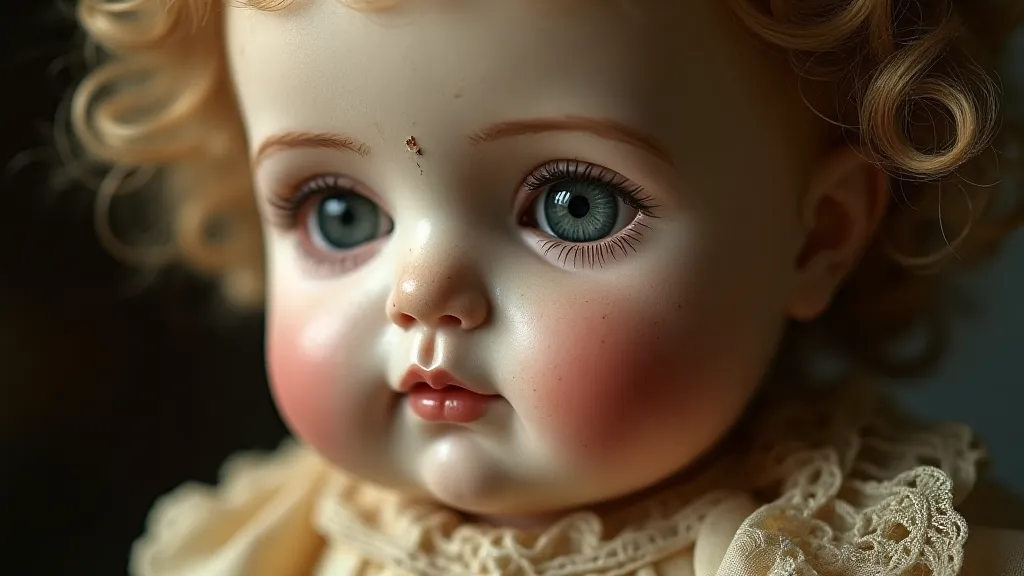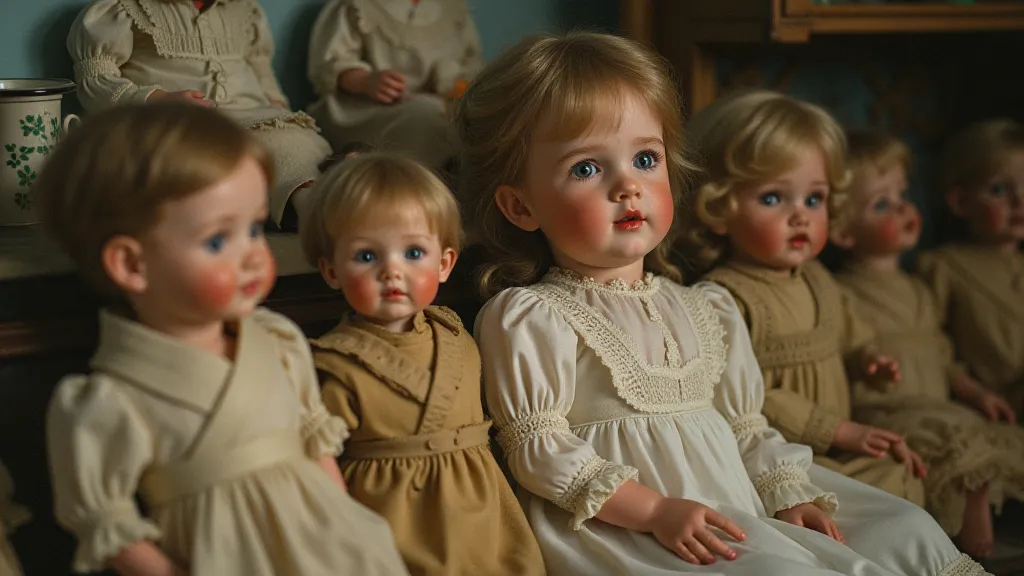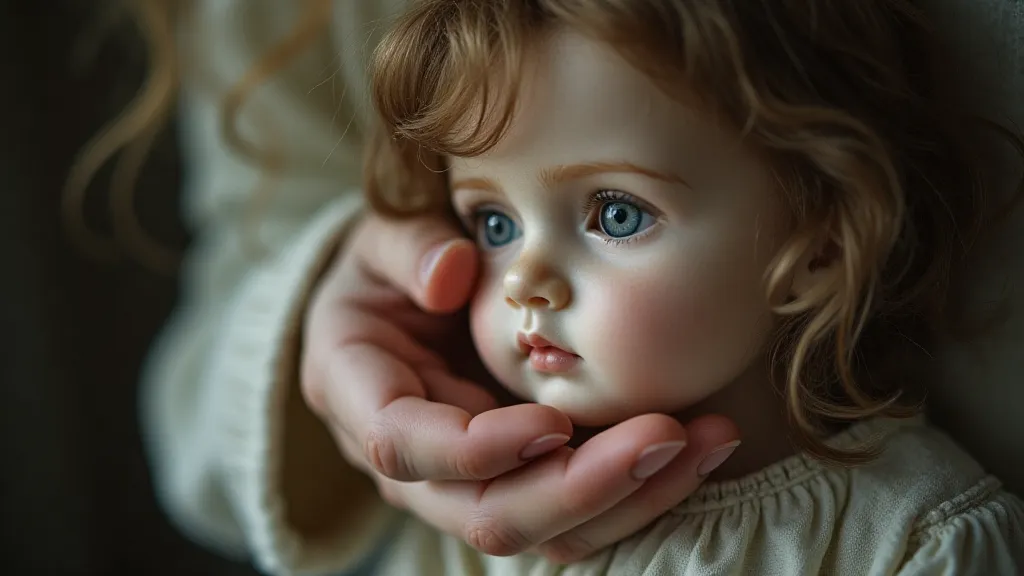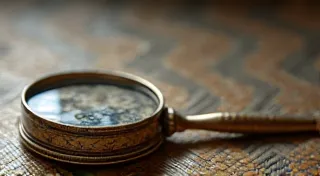The Collector's Paradox: Obsession and the Pursuit of Perfection in Antique Doll Collecting
There's a peculiar allure to antique dolls. Beyond the delicate porcelain skin, the meticulously sewn clothes, or the carefully painted features lies something deeper, something that draws collectors into a world of history, artistry, and a sometimes-consuming passion. It’s not merely about owning a toy; it’s about holding a fragment of the past, a tangible echo of a bygone era. But the pursuit of these echoes often leads to a collector’s paradox: the relentless striving for perfection clashes with the understanding that true beauty lies in the story, the wear, the *imperfection* that testifies to a life lived – even if that life was largely imagined by a child long ago.
My own journey into antique doll collecting began innocently enough. A dusty, forgotten doll in my grandmother’s attic—a bisque-headed French bebe—sparked a curiosity. She wasn't pristine; her paint was faded, a tiny chip marred her cheek, and her original clothes were threadbare. Yet, in her fragility, I saw a profound beauty, a poignant reminder of countless hours of play, of whispered secrets, and of the enduring power of imagination. That single doll opened a door to a universe I never knew existed.

A History Woven in Porcelain and Cloth
The history of antique dolls is inextricably linked to the development of manufacturing and the changing role of childhood. Before the 19th century, dolls were primarily handcrafted and expensive, luxury items reserved for the wealthy. The Industrial Revolution, with its advances in mold-making and mass production, democratized doll ownership, making them accessible to a wider range of families. From the early wooden dolls to the sophisticated porcelain and bisque creations of the Victorian era, each type of doll reflects the social and technological climate of its time. The conditions under which these dolls were produced, however, often involved a hidden cost – a human one – that is often overlooked in the romanticized view of the past. Understanding the realities of early manufacturing requires looking beyond the charming aesthetics and considering the difficult lives of those involved in the process.
The mid-to-late 19th century witnessed a flourishing of doll manufacturing in Germany, France, and the United States. Companies like Jumeau, Kestner, and Armand Marseille in Germany, and the Bleuette dolls from France became synonymous with quality and artistry. These dolls were more than just toys; they were objects of artistry, meticulously crafted with intricate details, expressive faces, and beautifully designed clothing. They were often considered heirlooms, passed down through generations, imbued with memories and sentimental value. The practice of passing down dolls through families adds another layer of complexity, imbuing them with emotional weight and creating a tangible link to past generations.
The Allure of the Past: Nostalgia and Memory
Why do we collect? It's a question that plagues every collector, myself included. The answer, of course, is multifaceted. There’s the intellectual appeal – the desire to understand the history, the artistry, the cultural context of these objects. But beyond that lies something more visceral – a yearning for a time we never knew, a romanticized vision of childhood innocence and simpler times. Antique dolls, in particular, possess a unique power to evoke nostalgia, even for those who didn’t grow up playing with them. They represent a connection to a past that is simultaneously tangible and elusive. The sentimental value these dolls acquire over time often surpasses any monetary worth, becoming treasured reminders of loved ones and shared memories.
For some, collecting antique dolls is a way of reconnecting with their own childhood, of revisiting those cherished memories of play and imagination. For others, it’s a means of escaping the complexities of the modern world, of finding solace in the beauty and simplicity of the past. It’s a quiet rebellion against the relentless pace of technological advancement, a conscious decision to hold onto something real, something handmade, something that embodies a different set of values.
The Quest for Perfection: An Impossible Dream?
The collector’s paradox becomes acutely apparent in the relentless pursuit of perfection. The ideal antique doll – pristine condition, original clothing, perfect paint – is a rare and expensive commodity. The market is driven by a desire for this idealized past, a yearning for a doll that embodies a flawless representation of its era. However, true collectors often find themselves wrestling with the understanding that the very flaws that diminish a doll’s monetary value often enhance its character and historical significance. These imperfections, these subtle signs of wear, can tell a story more compelling than any pristine facade ever could.
I recall once encountering a particularly beautiful Jumeau doll, impeccably dressed and seemingly untouched by time. The price tag was astronomical. Yet, as I examined her, I couldn’t shake the feeling that something was missing. The wear, the tiny imperfections, the subtle signs of a life lived – these were the things that made a doll truly compelling. A perfect doll felt…sterile. It was a museum piece, stripped of its soul. The weight of such a legacy, passed down through generations, can also be profound, evoking strong emotions and a sense of responsibility to preserve the doll’s story.

Restoration vs. Preservation: A Delicate Balance
The question of restoration further complicates the collector’s paradox. Should we strive to restore antique dolls to their original condition, or should we preserve them as they are, embracing their imperfections as a testament to their history? The answer, as with most things in collecting, is nuanced and depends on individual preferences and ethical considerations. There are those who meticulously repair and revive these relics, attempting to return them to their former glory, while others believe in allowing the passage of time to be visible, as a mark of authenticity.
Over-restoration can strip a doll of its historical integrity, erasing the very signs that tell its story. However, neglect can lead to further deterioration, ultimately diminishing a doll’s value and beauty. Responsible collectors often seek a balance between preservation and gentle restoration, focusing on stabilizing fragile areas and addressing significant damage while respecting the doll’s original character. Sometimes, the most responsible course of action is to simply observe and document, allowing the doll to tell its own silent story.
The Enduring Value: More Than Just Monetary Worth
Ultimately, the value of collecting antique dolls extends far beyond monetary worth. It’s about preserving a piece of history, appreciating the artistry of bygone eras, and connecting with the stories that these objects hold. It’s about finding beauty in imperfection, embracing the passage of time, and finding solace in the enduring power of imagination. It’s about understanding that a doll isn’t just a toy; it’s a window into the past, a tangible reminder of the enduring human need for connection, creativity, and play. The dolls themselves are vessels for stories, echoing laughter, tears, and the passage of time, serving as powerful links to generations past.
My grandmother’s doll, the one that started it all, is still among my most treasured possessions. The chip on her cheek, the faded paint, the threadbare clothes – these are not flaws; they are hallmarks of a life well-lived, a silent testament to the countless hours of joy and laughter she brought to a child long ago. And that, I realized, is the true collector’s paradox: the greatest value lies not in perfection, but in the stories that imperfection tells. This fascination with the past, and the objects that embody it, isn’t limited to dolls; it speaks to a broader human desire to understand and connect with generations gone by – a yearning reflected in countless collections and historical pursuits.

The allure of antique dolls also prompts reflection on the human element behind their creation, and the sometimes-difficult circumstances under which they were produced. Delving deeper into the history of these cherished objects requires acknowledging the Shadows of Industry: The Human Cost Behind Antique Doll Production, a reality often overlooked in the romanticized view of the past. The emotional weight associated with passed-down heirlooms is undeniable, and understanding the significance of these legacies is crucial to appreciating the true value of these collectibles. Consider, for example, how the Whispers of Inheritance: The Emotional Weight of Passed-Down Antique Dolls can profoundly shape our connection to the past.
For those seeking to ensure the responsible care and preservation of their antique dolls, resources and insights into the art of Fractured Elegance: Repairing and Restoring Antique Dolls with Reverence can be invaluable. Understanding the subtle nuances of expression and the societal context they represent offers a deeper appreciation for these intricate creations. For example, the ways in which antique dolls conveyed personality through their eyes is a fascinating subject worthy of further exploration – a glimpse into The Language of the Eyes: How Antique Doll Expressions Conveyed Personality.





